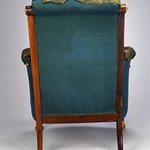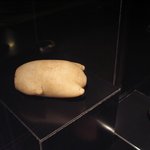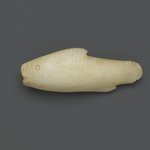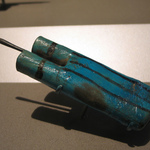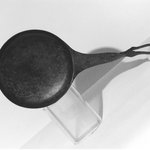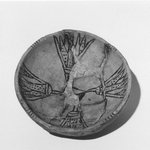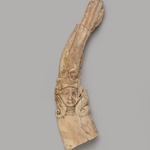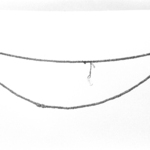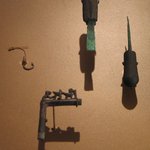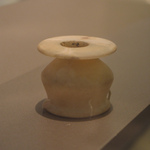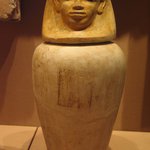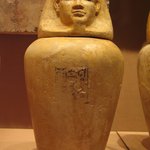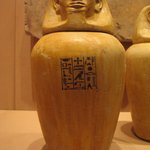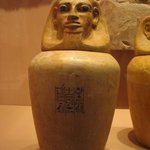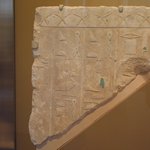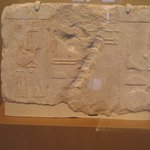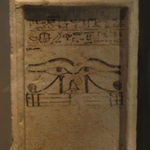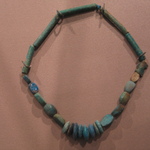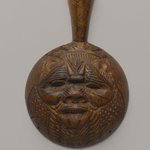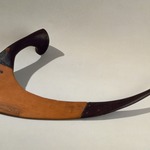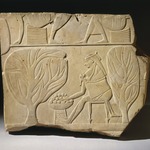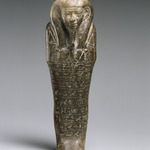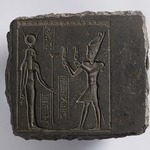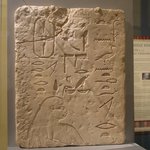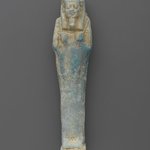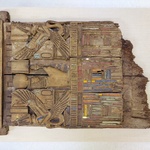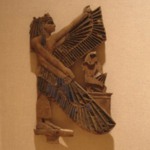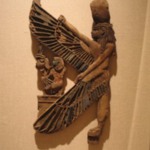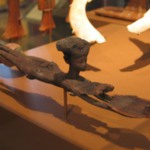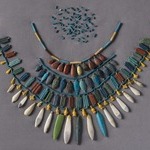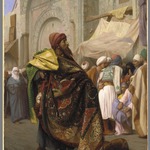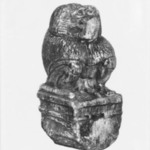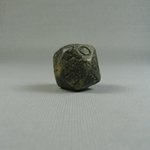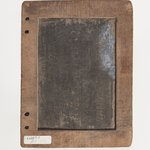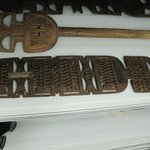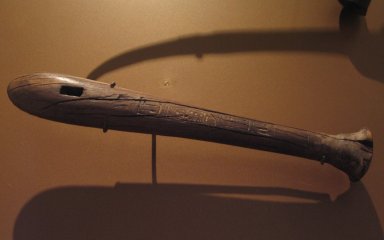
Whip Handle Inscribed with Cartouche of Amunhotep IV
Egyptian, Classical, Ancient Near Eastern Art
On View: Egyptian Orientation Gallery, 3rd Floor
Tools
Egyptian workers, including artisans, farmers, and fishermen, required a wide variety of specialized tools.
Woodworkers employed axes that had copper or bronze blades lashed to wooden handles with leather.
Carpenters produced smooth surfaces with copper chisels, often with serrated edges.
Tanners used broad, flat knives to cut strips of leather for sandals, harnesses, and whips, which they then pierced with metal awls.
Field hands cut grain with curved sickles fitted with small flint blades.
Fishermen relied on metal hooks with tiny barbs, much like their modern-day equivalents.
Officials used siphons to inspect the liquid contents of vessels without breaking through the protective mud seals.
Egyptian workers, including artisans, farmers, and fishermen, required a wide variety of specialized tools.
Woodworkers employed axes that had copper or bronze blades lashed to wooden handles with leather.
Carpenters produced smooth surfaces with copper chisels, often with serrated edges.
Tanners used broad, flat knives to cut strips of leather for sandals, harnesses, and whips, which they then pierced with metal awls.
Field hands cut grain with curved sickles fitted with small flint blades.
Fishermen relied on metal hooks with tiny barbs, much like their modern-day equivalents.
Officials used siphons to inspect the liquid contents of vessels without breaking through the protective mud seals.
MEDIUM
Wood, pigment?
DATES
ca. 1539–1292 B.C.E.
DYNASTY
Dynasty 18
PERIOD
New Kingdom
DIMENSIONS
1 5/8 × 1 3/4 × 12 in. (4.1 × 4.4 × 30.5 cm) (show scale)



INSCRIPTIONS
The Good God, Lord of the Two Lands, Neferkheprure-Wanre, Beloved of Urhekau, Mistress of Heaven
COLLECTIONS
Egyptian, Classical, Ancient Near Eastern Art
ACCESSION NUMBER
37.952E
CREDIT LINE
Charles Edwin Wilbour Fund
CATALOGUE DESCRIPTION
Wooden whip-handle shaped like a club with terminal in form of papyrus umbel. Rectangular slot near front end. One column of text on one side.
Condition: White fill in signs only partially preserved; long cracks run length of object.
EXHIBITIONS
MUSEUM LOCATION
This item is on view in Egyptian Orientation Gallery, 3rd Floor
CAPTION
Whip Handle Inscribed with Cartouche of Amunhotep IV, ca. 1539–1292 B.C.E. Wood, pigment?, 1 5/8 × 1 3/4 × 12 in. (4.1 × 4.4 × 30.5 cm). Brooklyn Museum, Charles Edwin Wilbour Fund, 37.952E. Creative Commons-BY (Photo: Brooklyn Museum, CUR.37.952E_erg456.jpg)
IMAGE
overall, CUR.37.952E_erg456.jpg. Brooklyn Museum photograph, 10/22/2008
"CUR" at the beginning of an image file name means that the image was created by a curatorial staff member. These study images may be digital point-and-shoot photographs, when we don\'t yet have high-quality studio photography, or they may be scans of older negatives, slides, or photographic prints, providing historical documentation of the object.
RIGHTS STATEMENT
Creative Commons-BY
You may download and use Brooklyn Museum images of this three-dimensional work in accordance with a Creative Commons license. Fair use, as understood under the United States Copyright Act, may also apply.
Please include caption information from this page and credit the Brooklyn Museum. If you need a high resolution file, please fill out our online application form (charges apply).
For further information about copyright, we recommend resources at the United States Library of Congress, Cornell University, Copyright and Cultural Institutions: Guidelines for U.S. Libraries, Archives, and Museums, and Copyright Watch.
For more information about the Museum's rights project, including how rights types are assigned, please see our blog posts on copyright.
If you have any information regarding this work and rights to it, please contact copyright@brooklynmuseum.org.
RECORD COMPLETENESS
Not every record you will find here is complete. More information is available for some works than for others, and some entries have been updated more recently. Records are frequently reviewed and revised, and we welcome any additional information you might have.
